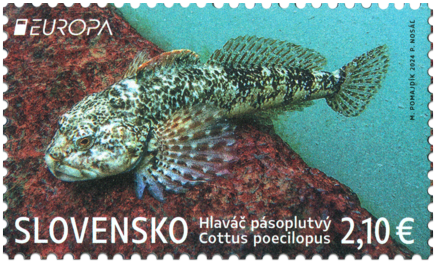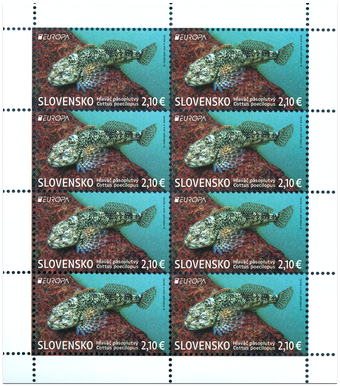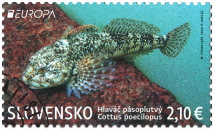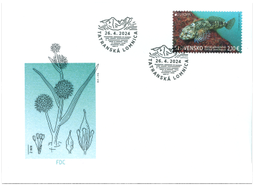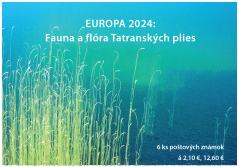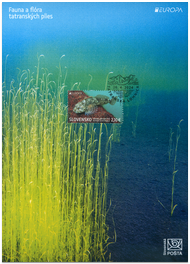815 Date of issue
26.04.2024 Face value
2.10 € Sell price
2.10 €
The organisms that inhabit the lakes of the Tatra Mountains must be adapted to the extreme conditions that are generally characterised by very low temperatures, a short ice-free growing season and a lack of nutrients. The lower-lying lakes show a greater degree of diversity, whereas in the high mountain environment there are significantly fewer species. If higher plant species occur here at all, they do so in communities that are simple in structure and very species-poor. One of the rarest species of vascular plants that can be found in the lakes of the Tatras is the narrowleaf bur-reed (Sparganium angustifolium), which, within Slovakia, occurs in monodominant communities within the two Roháče lakes in the Western Tatras and the "Nižné Žabie pleso" lake in the High Tatras. This glacial relic has remained within area-limited, suitable habitats as a remnant of the last ice age. In addition to several other vascular plants, species of bryophytes and abundant cyanobacteria and algae can be found in the waters of the Tatras. Some species are only found within the waters of the Tatra Mountains and many of them bear the generic name "tatricus", "tatrica" or "tatrensis".
There is a particularly rich fauna of small aquatic invertebrates such as bivalves, crustaceans or beetles. After the surface ice melts, the lakes are used by amphibians and their various stages of development can be observed. The common frog (Rana temporaria), Carpathian newt (Triturus montandoni) and alpine newt (Triturus alpestris) can be found. In addition to amphibians, we can also find the various developmental stages of insects such as midges, caddisflies and dragonflies, which later appear in the close vicinity of the lakes. The rarest animal found is probably the glacial relic, the Arctic fairy shrimp (Branchinecta paludosa). Today it can only be found in one lake, in the Tatras, in the whole of Central Europe. In the past, it could also be found in one of the lakes on the Polish side of the Tatra Mountains, but they disappeared due to overfishing, which, together with acidification and warming, are the greatest threats to the fauna of mountain lakes. Fish stocking of the glacial lakes of the West Tatras dates back to the 19th century, when Rainbow trout was introduced here, and also Alpine bullhead as his natural food. Ecologists draw attention to negative impact of this human action on the fragile ecosystem of the High Tatras what reflects also Slovenská pošta, a.s., by issuing this spectacular stamp.
Katarína Žlkovanová, Lukáš Lončík, Tatra National Park Administration
Show less© 2024 POFIS - Postal philatelic service. All rights reserved

